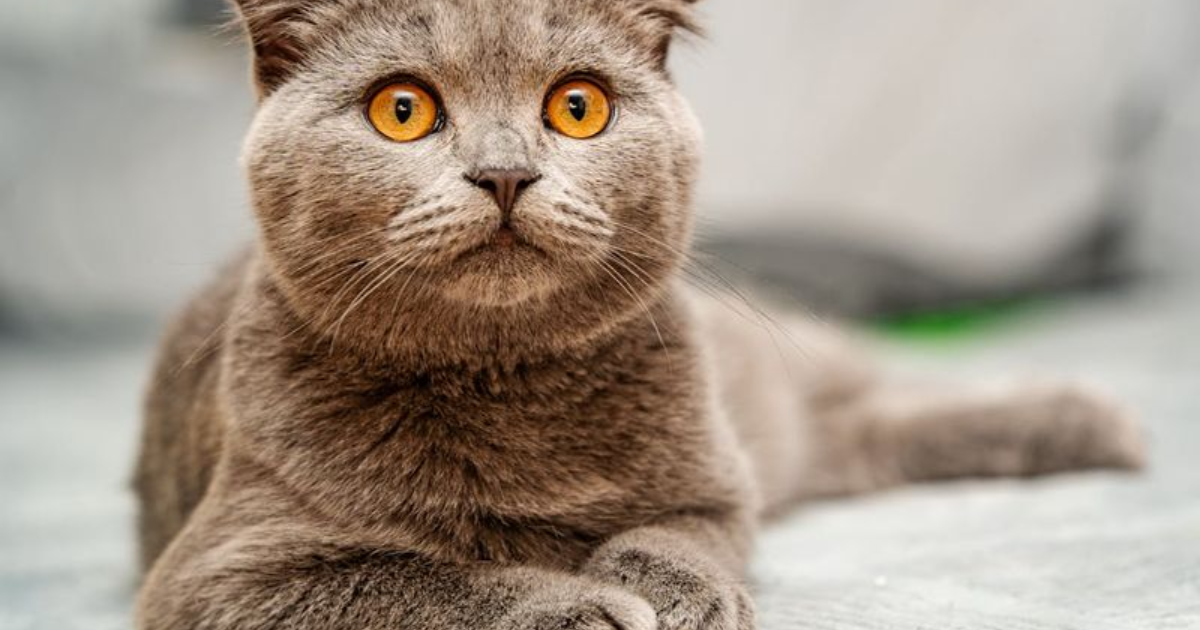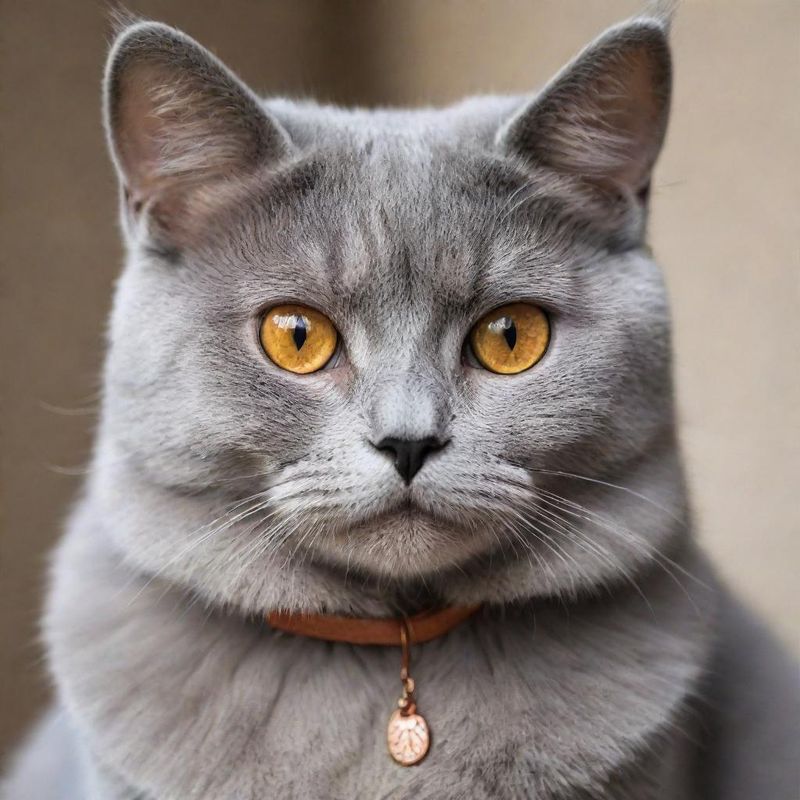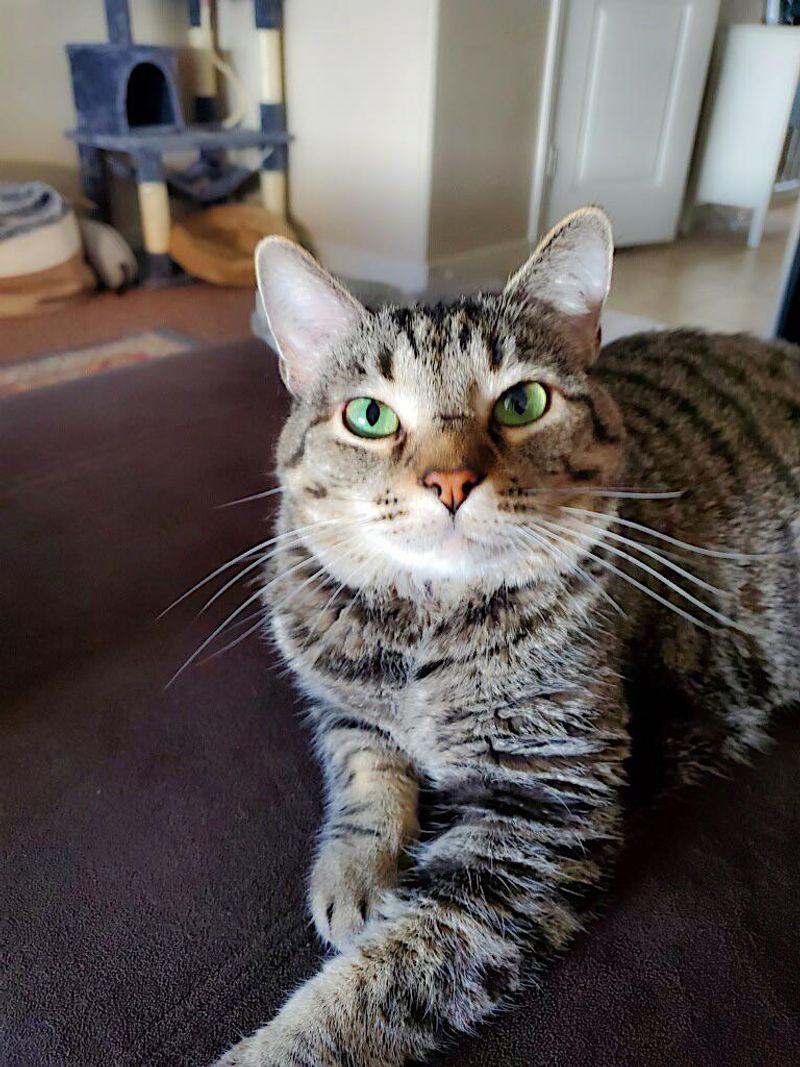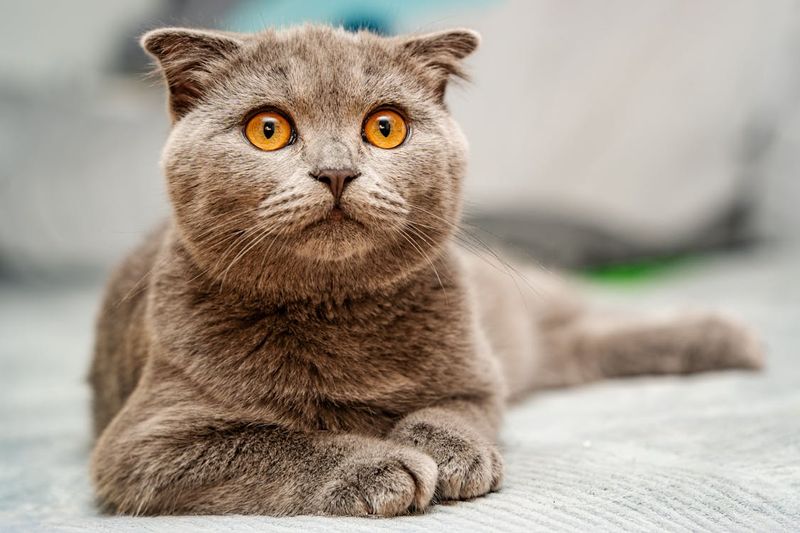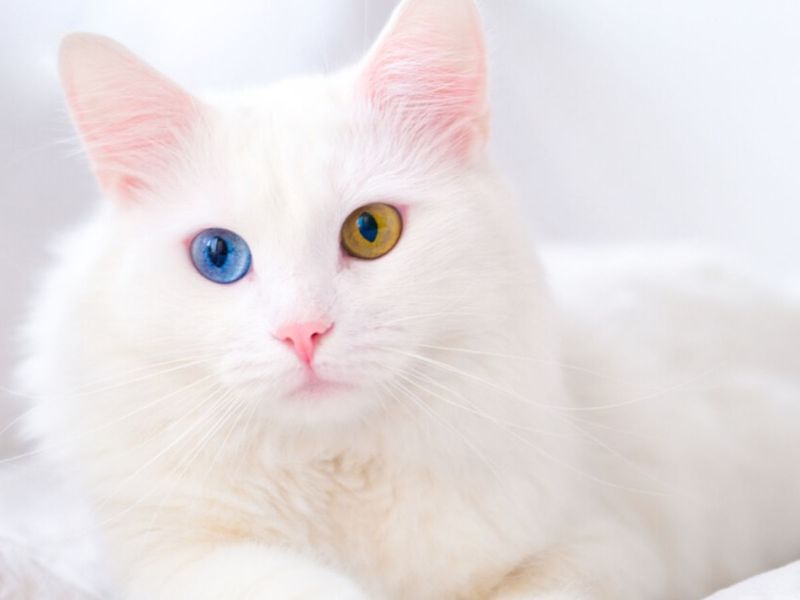📖 Table of Content:
Cats are known for their intriguing eyes, which come in a variety of colors. While common shades like green, yellow, and blue are often seen, some cats possess rare eye colors that captivate and mesmerize.
These unique hues are not just visually stunning but can also indicate various genetic traits and health conditions.
In this post, we’ll explore five rarest cat eye colors and what they mean, offering insights into the fascinating world of feline genetics.
5. Copper Eyes
Copper eyes in cats are a rare and striking sight. This eye color appears as a deep, rich orange, reminiscent of shiny copper metal. Copper eyes can be found in various breeds but are particularly common in Persian and Burmese cats.
The presence of copper eyes is often linked to high levels of melanin, the pigment responsible for dark colors in fur and eyes. This rich pigmentation gives the eyes their distinctive warmth and depth.
While copper eyes are a genetic trait, they can sometimes indicate liver issues, especially if the color suddenly changes. It’s always wise to monitor any shifts in eye color, as they may signal underlying health problems.
Copper-eyed cats are generally healthy and captivating companions, enchanting those who encounter them with their glowing gaze.
4. Emerald Green Eyes
Emerald green eyes in cats are truly a sight to behold. These vivid, jewel-like eyes are most often seen in Russian Blue and Egyptian Mau breeds, where they are considered a breed standard.
The striking green color results from a combination of genetic factors that enhance the production of green pigments. This captivating hue is often highlighted by the cat’s silvery-gray or tabby coat, creating a breathtaking contrast.
Emerald-eyed cats are often associated with mystery and allure, drawing people in with their enchanting gaze. While there are no known health issues linked specifically to green eyes, regular check-ups are essential to ensure overall eye health.
These cats’ eyes are windows to their playful, curious, and sometimes mischievous personalities.
3. Aquamarine Eyes
Aquamarine eyes in cats enchant with their soft blue-green hue, reminiscent of clear tropical waters. This rare color is often found in cats with Siamese or Tonkinese ancestry, where it adds to their exotic appeal.
The aquamarine shade is a result of low melanin levels, causing the light to be scattered in a way that creates a unique blue-green appearance. These eyes tend to capture and reflect light beautifully, giving the cat a mystical appearance.
While the color itself is not linked to specific health issues, it can sometimes be a marker for certain genetic traits. Owning a cat with aquamarine eyes means enjoying a little piece of oceanic beauty every day, as these eyes captivate with their unique color and serene expression.
2. Amber Eyes
Amber eyes in cats are a warm, honey-like color that can range from light yellow to deep orange. This rare hue is particularly common in Abyssinian and Somali breeds, where it enhances their regal appearance.
Amber eyes are the result of moderate melanin levels, providing a golden, sunlit effect. Their brightness and clarity often make them stand out, even in low light conditions. Amber-eyed cats are sometimes said to have a more intense gaze, adding to their appeal.
While beautiful to behold, amber eyes don’t indicate any specific health conditions. However, it’s essential to keep an eye on any changes in color, as these can signal underlying problems. Embracing an amber-eyed cat means welcoming a pet with a warm and watchful nature, full of affection and curiosity.
1. Odd-Eyed (Heterochromia)
Odd-eyed cats, or those with heterochromia, possess two different colored eyes. This condition is most commonly seen with one blue eye and one green, gold, or copper eye. It’s particularly prevalent in white cats and certain breeds like Turkish Van and Turkish Angora.
Heterochromia occurs due to genetic anomalies affecting melanin distribution. Though visually striking, it’s generally harmless and doesn’t impact vision quality. However, in some cases, especially in cats with predominantly white coats, it can be associated with deafness in the ear on the side of the blue eye.
These unique cats are often surrounded by myths and legends, symbolizing good luck and protection in some cultures. Embracing an odd-eyed cat means celebrating their distinctive charm and the special beauty they bring to your life.
